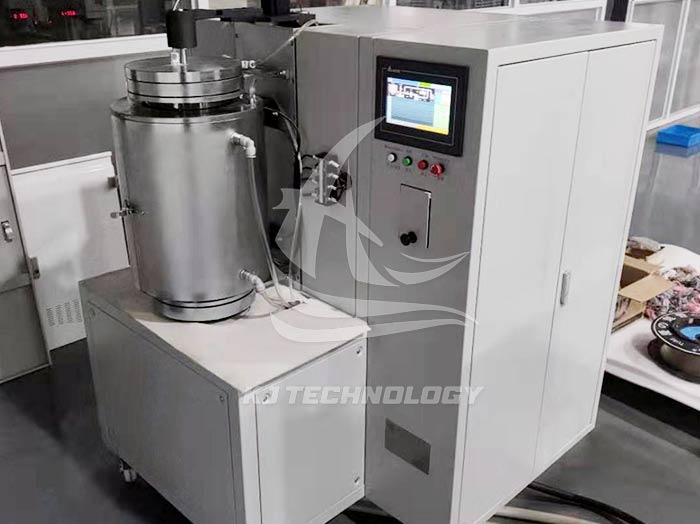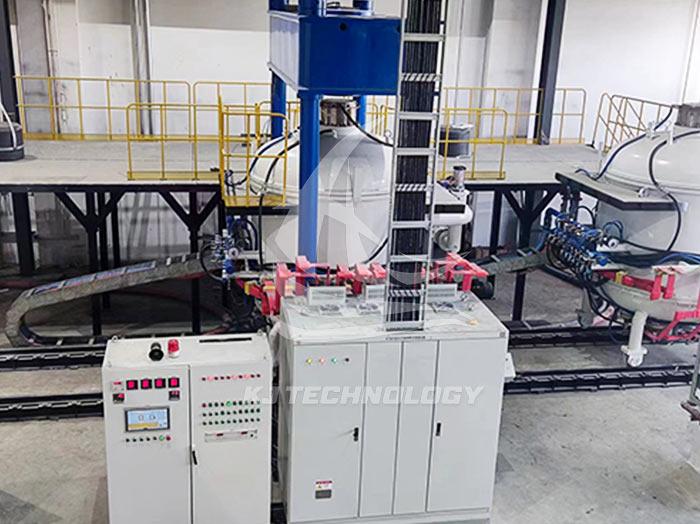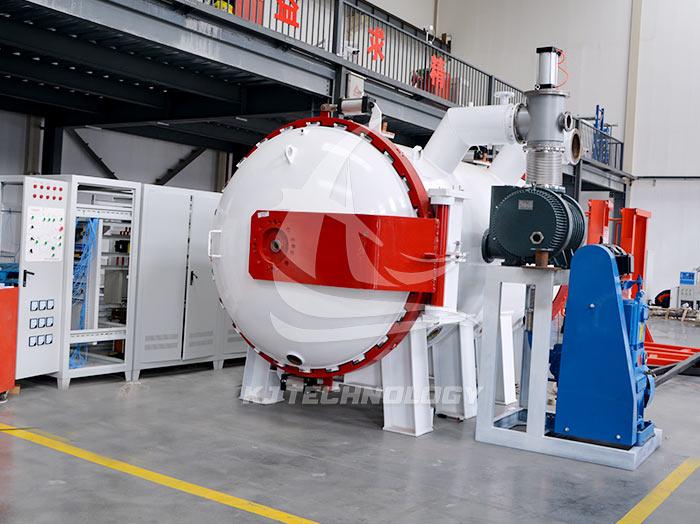High vacuum heat treatment electric furnace
 09-26-2025 Author: KJ technology
09-26-2025 Author: KJ technology
A high vacuum heat treatment electric furnace is an advanced equipment for heating, insulation, and cooling metal or non-metal materials in extremely high vacuum environments (with a vacuum degree of up to 10 ⁻³ Pa to 10 ⁻⁴ Pa). Its core advantage lies in significantly reducing adverse reactions such as oxidation, decarburization, and carbonization of materials at high temperatures by eliminating reactive gases such as oxygen, while optimizing material properties. The following is a detailed introduction to high vacuum heat treatment electric furnaces:
1. Working principle
The high vacuum heat treatment electric furnace constructs a vacuum degree below 10 ⁻ ³ Pa through vacuum pumps, valves, and measuring devices, effectively blocking air convection and oxidation reactions. Its heating methods include resistance heating, induction heating, and electron beam heating, combined with heating elements made of high-temperature resistant materials such as graphite and molybdenum, which can achieve precise temperature control above 1300 ℃. In a vacuum environment, there is no oxide layer formed on the surface of the material, and the surface smoothness is significantly improved. At the same time, impurities and gases inside the material can be removed, improving the density and performance of the material.
2. Core advantages
No oxidation, no pollution: The high vacuum environment eliminates oxidation and decarburization on the surface of the workpiece, avoiding performance degradation and surface quality deterioration caused by oxidation in traditional heat treatment.
High process precision: Temperature uniformity can be controlled within ± 5 ℃, meeting the strictest aviation and automotive standards, ensuring the stability and consistency of material properties.
Flexible and controllable cooling: supports adjustable gas quenching pressure within the range of 2 bar to 20 bar, adapts to different materials and cross-sectional sizes, achieves rapid cooling, and reduces workpiece deformation.
Process diversity: The same equipment can support multiple processes such as quenching, carburizing, annealing, tempering, brazing, sintering, etc., to meet complex heat treatment requirements.
Environmental protection and energy conservation: No combustion exhaust gas, high heat utilization rate, in line with sustainable development requirements, while reducing production costs.
3. Application Fields
Aerospace: Used for heat treatment of high-temperature alloy components such as engine blades and turbine disks to enhance high-temperature strength, creep resistance, and fatigue life. For example, nickel based high-temperature alloy blades undergo solution treatment at 1150 ℃ in a vacuum furnace, resulting in grain refinement and improved high-temperature strength.
Automotive manufacturing: Used for heat treatment of key components such as gears and bearings to improve surface hardness and wear resistance while maintaining core toughness. For example, the gears of a car gearbox are carburized in a vacuum environment to avoid internal oxidation, resulting in a uniform and consistent infiltration layer that significantly reduces deformation.
Semiconductor industry: used for heat treatment of silicon wafers and high-precision microelectronic devices, meeting the extremely high cleanliness requirements of semiconductor materials. For example, a 10 ⁻⁶ Pa ultra-high vacuum furnace can meet the cleanliness requirements of silicon wafers.
Powder metallurgy: used for sintering hard alloys, ceramics and other materials to prepare parts with higher density. For example, alumina ceramics sintered at 1600 ℃ in a vacuum furnace have higher density and are used for high-power LED packaging.
Medical devices: Used for heat treatment of biocompatible materials such as surgical instruments and joint prostheses to enhance material performance and biocompatibility. For example, after annealing at 1050 ℃ in a vacuum furnace, the surface roughness of 316L stainless steel surgical instruments decreases and does not require subsequent polishing.
4. Technological development trends
Intelligence: AI algorithms optimize heating curves in real-time, and digital twin technology enables fault prediction, improving production efficiency and product quality.
Energy efficiency improvement: Graphene heating elements improve thermal efficiency, waste heat recovery systems reduce energy consumption, and achieve green manufacturing.
Multi functional integration: Integrating composite functions such as plasma cleaning and ion nitriding to shorten production cycles and improve equipment utilization.
Ultra high vacuum and high-temperature processing: Developing 10 ⁻⁴ Pa ultra-high vacuum furnaces and high-temperature processing technologies above 2200 ℃ to meet the needs of cutting-edge fields such as semiconductors and new energy.
5. Precautions for use
Vacuum sealing: Ensure that the furnace body does not leak or leak water, regularly check the performance of the vacuum pump, valves, and measuring devices, and maintain the original leakage rate of the furnace.
Workpiece cleaning: Workpieces need to be cleaned thoroughly to prevent oil stains and oil vapor from entering the furnace and to avoid creating an explosive atmosphere.
Safe operation: Use low voltage and high current heating to prevent the occurrence of glow discharge or arc discharge; Set up a water cooling device to ensure that all components do not deform or damage under vacuum and heat conditions.
Process control: Strictly follow the process specifications to set the temperature rise and fall curves, avoiding deformation or cracking of the workpiece caused by rapid heating or cooling.








